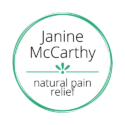Relieve knee pain naturally

“My knees hurt because I’m old.” C. said when she came for her first Ortho-Bionomy session with me. Working as a gardener for many years, she now thought she would have to stop gardening because she was in her 60’s and her knees ‘didn’t work properly anymore’. She couldn’t bend or squat comfortably and her knee pain was interfering with her work.
Although she didn’t have much hope for change she wanted to try Ortho-Bionomy anyway, in case it might help relieve some of the pain.
When she returned for her follow-up session she was very pleasantly surprised. “I thought it was my age that made my knees stop functioning properly, but they feel so much better now!” she told me.
After that first session her body had naturally released her knee pain and muscle tension, restoring normal function and mobility. Two sessions were all she needed to get back into gardening, and now she often recommends Ortho-Bionomy to her friends.
We often get accustomed to the restrictions and dysfunctional patterns that our bodies develop, associating them with ageing. Many people think “My body is too old to change”. Fortunately, Ortho-Bionomy helps our bodies to remember how to move and be comfortable again, no matter how old we are. (If you’re still not convinced, download my free guide to pain relief here.)
The best thing about Ortho-Bionomy is that it doesn’t hurt. Some people – myself included! – find that many other treatment approaches just hurt too much – sometimes they feel worse than the pain you started with. Fortunately, Ortho-Bionomy is gentle enough to be painless AND effective enough to create lasting change.
Click here to learn more about booking an in-person Ortho-Bionomy session
